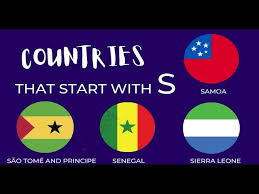The Historical Background of the Old Minnesota Flag
The old Minnesota flag, adopted in 1957, serves as an important emblem reflecting the state’s history and identity. Before its adoption, Minnesota’s flags evolved through various representations, each mirroring the shifting values and priorities of the state. The 1957 flag incorporated significant elements representative of Minnesota’s heritage, creating a narrative encapsulated within its fabric.
The design of the old Minnesota flag was profoundly influenced by socio-political factors, particularly during a period when states were reaffirming their unique identities following a post-war boom. This era was marked by a resurgence in state patriotism, as citizens sought symbols that connected them to their history and culture. The flag itself features a blue field representing the sky, framed by a wreath of laurel leaves, while the central emblem depicts a pastoral scene signifying Minnesota’s agricultural roots, a crucial aspect of the state’s economy.
Embedded in the flag’s design are several symbols that bear significance; for instance, the state motto, “L’Étoile du Nord,” which translates to “The Star of the North,” signifies Minnesota’s status as a beacon of progress. The old Minnesota flag also incorporates imagery of Native American heritage, commemorating the state’s Indigenous roots that continue to play a vital role in its cultural landscape. The presence of agricultural themes not only pays homage to the farmers who shaped Minnesota but also emphasizes the state’s natural beauty and abundant resources.
The adoption of this flag was not merely a matter of aesthetics; it encapsulated the political climate of the time, affirming Minnesota’s independence and identity within the broader tapestry of American states. As such, the old Minnesota flag stands as a symbol of resilience, heritage, and pride, worthy of exploration and understanding in the context of the state’s ongoing narrative.
Design Elements and Symbolism of the Old Minnesota Flag
The old Minnesota flag, officially adopted in 1957, presents a rich tapestry of colors and symbols that convey the identity and values of the state. At the center of this flag lies the state seal, intricately designed with several noteworthy elements. The predominant colors used in the flag, namely blue, white, and gold, signify loyalty, purity, and wealth, respectively. These colors are not merely for aesthetic appeal but serve as a backdrop for the deeper meanings behind the symbols featured within the state seal.
One of the most prominent images depicted within the seal is that of a farmer plowing the fields, representing Minnesota’s agricultural roots and the hard work of its residents. This symbol makes a strong statement about the importance of farming in the state’s economy and culture. In contrast, the depiction of a Native American on horseback highlights the state’s Native heritage and the rich history that predates European settlement. Together, these figures encapsulate the dual narratives of Minnesota’s past, emphasizing both the indigenous cultures and the agricultural development brought by settlers.
Encircling the state seal is a wreath of laurel leaves, symbolizing victory and peace. This element adds a layer of significance to the old Minnesota flag, as it signifies the aspirations for harmony among various communities within the state. Furthermore, the seal is adorned with thirteen stars, representing the first thirteen states to enter the Union, underscoring Minnesota’s commitment to the values of the United States while celebrating its unique identity.
Ultimately, the design elements of the old Minnesota flag serve as a poignant reminder of the state’s diverse history, culture, and values, encapsulated in a comprehensive visual narrative that honors both its indigenous roots and its agricultural heritage.

Public Reception and Controversies Surrounding the Old Minnesota Flag
The old Minnesota flag has been a subject of considerable debate and discussion since its adoption in 1957. Initially, the flag was embraced by some citizens who valued its historical connections and the encapsulation of Minnesota’s agricultural heritage. However, over the years, increasing scrutiny surrounded its design and the symbolic representation of the state’s diverse identities. Many critics pointed to the flag’s imagery and how it failed to reflect the complex social and cultural fabric of Minnesota. These concerns gained momentum particularly in a time when social justice and representation became pivotal topics across the nation.
The flag featured a design that included a central emblem with a white circle, adorned with depictions of a farmer, plow, and Indian on horseback, amidst various agricultural elements. While some appreciated these symbols as a celebration of Minnesota’s roots, others felt that they overlooked significant aspects of the state’s demographic evolution. As a result, various advocacy groups began to emerge, calling for a redesign that would better include Minnesota’s Indigenous peoples and the growing multicultural population. Public polls indicated a divided sentiment, with a notable percentage of respondents expressing the desire for change.
Furthermore, social media platforms became a battleground for supporters and opponents of the flag, leading to a wider public discourse on what the old Minnesota flag represented. This engagement highlighted the ongoing struggle between tradition and the need for more inclusive representations in public symbols. Movements advocating for a new flag drew attention to the significant lack of representation in Minnesota’s historical narratives, arguing that the designs of the past should not govern the state’s identity moving forward. As discussions continue, the fate of the old Minnesota flag serves as a reflection of broader societal issues surrounding identity and representation in America.
The Transition to the New Minnesota Flag: A Reflection on Change
The transition from the old Minnesota flag to its new design marks a significant moment in the state’s history. The decision to revamp the flag stemmed from a growing recognition that the previous emblem was not adequately reflective of Minnesota’s diverse population and values. The old Minnesota flag, while steeped in tradition, faced criticism for its lack of inclusivity and representation of all inhabitants. This catalyzed state leaders and community members alike to advocate for a redesign that would resonate with a broader audience.
Involving the community in the redesign process proved to be essential. Various forums and discussion panels were organized, allowing residents across different demographics to voice their opinions and suggestions. This collaborative approach ensured that the new flag would be a product of collective sentiment, embodying the essence of contemporary Minnesota. Selection criteria for the new flag focused on principles such as inclusivity, simplicity, and the effective representation of the state’s heritage. Designers were encouraged to integrate elements that highlighted Minnesota’s natural beauty and its rich cultural tapestry, while also honoring the history encapsulated by the old Minnesota flag.
